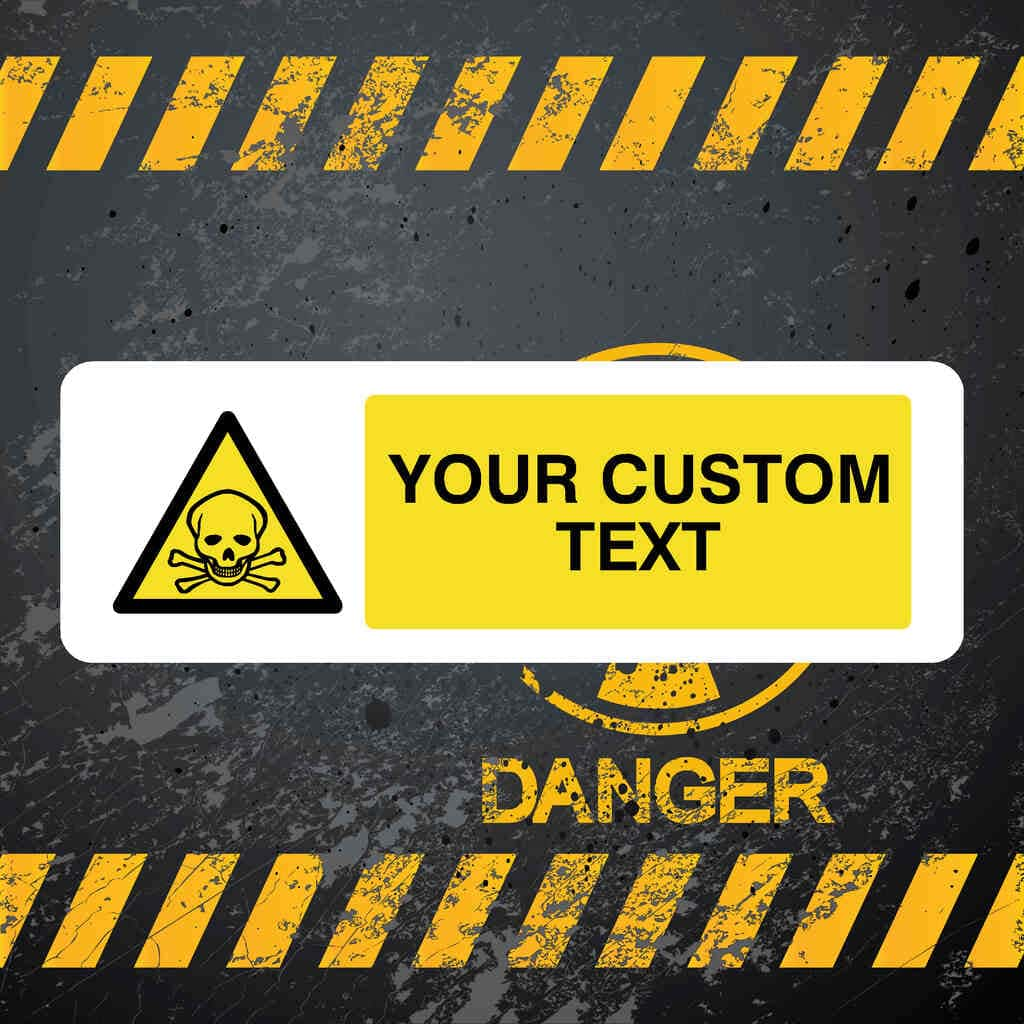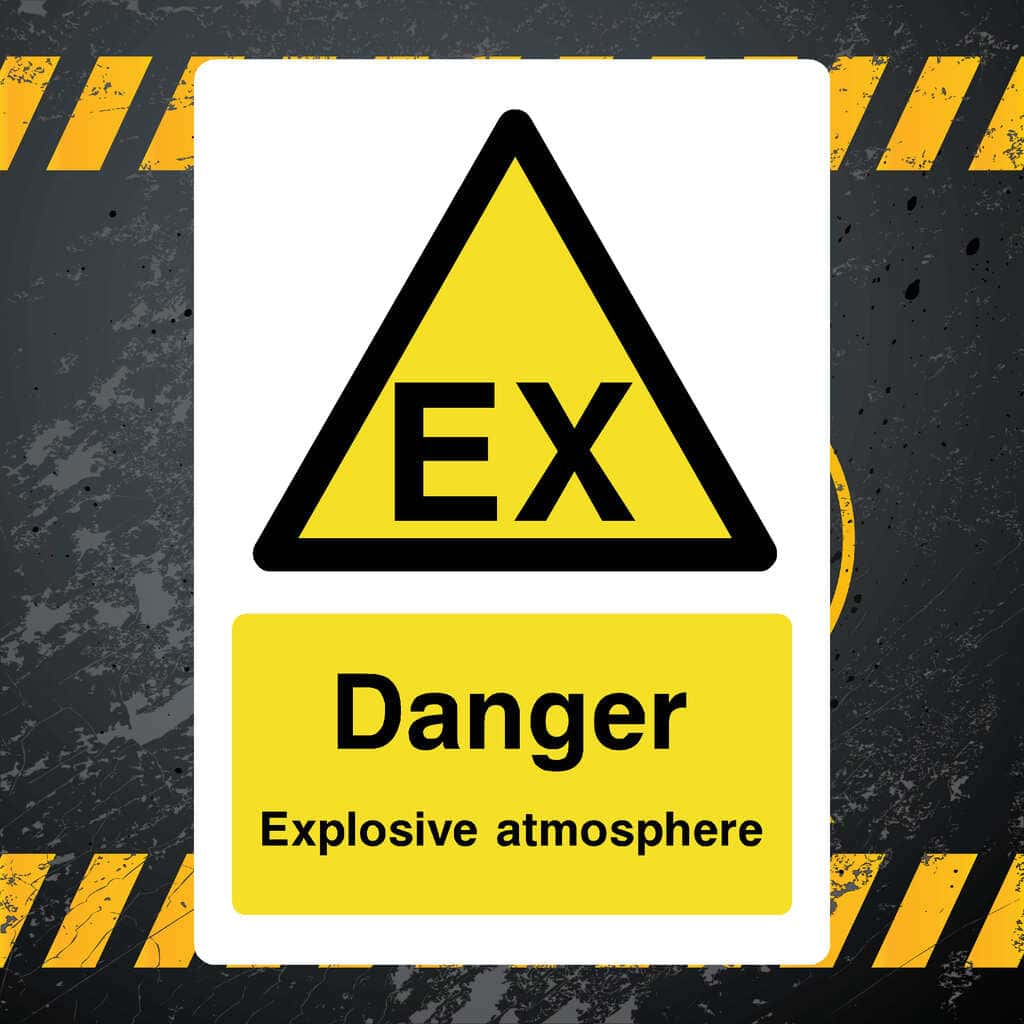Gas & Explosive Safety Signs
Safeguard your workplace with clear, compliant Gas & Explosive Safety Signs. Ideal for marking areas with flammable gases or explosive atmospheres, our signs meet UK and EU regulations (including ISO 7010 and HSE standards). Available in durable materials—rigid plastic, aluminium and self‑adhesive vinyl—for indoor and outdoor use. Featuring the universally recognised warning triangles and symbols, our signs minimise risk and maintain safety awareness for staff, visitors and contractors.
Refine your search
-
Acetylene Warning Sign -
Arc Welding Warning Sign V2 -
Battery Charging Sign -
Custom Chemical Danger (Gas) Sign -
Custom Chemical Danger (Gas) Sign -
Explosive Atmosphere (Bomb Symbol) Sign -
Explosive Atmosphere (Ex Symbol) Sign -
Explosive Atmosphere Sign -
Explosive Atmosphere Sign V2 -
Fire Gas Leak Action Sign -
Fumigation Warning Sign -
Gas Leak Action Glow Sign -
Hazard Area Warning Sign -
Hazardous Area Safety Sign -
LPG Flammable Safety Sign -
LPG Highly Flammable Safety Sign -
LPG Highly Flammable Warning Sign -
LPG Sign -
Nitric Acid Safety Sign -
No Smoking Gas Hazard Sign -
Warning Compressed Gas Sign
Frequently asked questions
Get quick solutions to your chemical hazard safety sign buying questions
Chemical hazard signs are safety signs designed to warn employees, visitors, and the public about the presence of hazardous substances in a particular area. These signs help prevent accidents, ensure compliance with safety regulations, and promote a safe working environment.
Under the Health and Safety (Safety Signs and Signals) Regulations 1996, employers must provide clear signage wherever there is a significant risk that cannot be avoided through other means.
Chemical hazard signs must be placed in areas where hazardous substances are stored, used, or transported. This includes:
Laboratories – Warning of biohazards, toxic chemicals, or corrosive substances.
Factories & Warehouses – Identifying areas where chemicals are stored or handled.
Construction Sites – Highlighting locations where hazardous substances, such as asbestos or solvents, are present.
Hospitals & Medical Facilities – Warning about biohazards and disinfectants.
Petrol Stations & Fuel Depots – Indicating the presence of flammable materials.
Farms & Agricultural Areas – Highlighting the risks of pesticides and fertilisers.
Public Areas – Displaying signs around restricted access zones where chemicals pose a risk.
The use of chemical hazard signs in the UK is primarily regulated by:
The Health and Safety (Safety Signs and Signals) Regulations 1996 – Requires employers to use signage when a risk cannot be eliminated by other safety measures.
Control of Substances Hazardous to Health (COSHH) Regulations 2002 – Covers the safe handling, use, and storage of hazardous substances.
The CLP Regulation (Classification, Labelling and Packaging) 2009 – Aligns chemical classification and labelling with the Globally Harmonized System (GHS).
Dangerous Substances and Explosive Atmospheres Regulations (DSEAR) 2002 – Covers the safe use of explosive or flammable substances.
Chemical hazard signs use standard pictograms in line with the Globally Harmonized System (GHS) and ISO 7010 standards. Common symbols include:
Flammable – Identifies substances that can ignite easily.
Corrosive – Warns of materials that can cause skin burns or damage materials.
Toxic – Indicates poisonous substances that may be harmful or fatal.
Harmful/Irritant – Highlights chemicals that can cause skin or respiratory issues.
Explosive – Used where unstable or explosive materials are present.
Gas Under Pressure – Used for compressed gas cylinders that pose an explosion risk.
Environmental Hazard – Warns of substances dangerous to aquatic life.
Failure to comply with chemical hazard signage regulations can result in:
Fines & Legal Action – Breaching HSE regulations can lead to fines or prosecution.
Injury Claims – Businesses may face compensation claims if employees or visitors suffer harm due to missing signage.
Increased Insurance Premiums – Non-compliance can lead to higher business insurance costs.
Workplace Accidents – Lack of proper signage increases the risk of chemical exposure incidents.
To stay compliant:
Conduct a risk assessment to identify where chemical hazard signs are needed.
Use signs that follow ISO 7010 & GHS standards for consistency.
Regularly inspect and replace damaged or faded signs.
Train employees on the meaning of hazard symbols and the importance of signage.






















